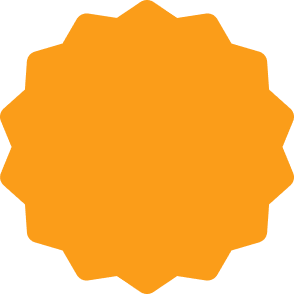What is DTG Printing?
Direct-to-Garment (DTG) printing uses advanced inkjet technology to print vibrant, full-color designs directly onto textiles like t-shirts or sweatshirts. It employs eco-friendly, water-based inks that blend into the fabric, offering a soft, breathable feel. Ideal for custom apparel, DTG requires minimal setup, making it perfect for one-off or small-batch orders with intricate, multicolored designs.
How Does DTG Printing Work?
Design Preparation
DTG printing begins with a high-resolution digital design, usually PNG or TIFF at 300 DPI. RIP software converts the image into CMYK colors for accurate reproduction, enabling detailed, multicolor prints ideal for custom apparel.
Garment Pre-Treatment
The garment, especially dark fabrics, is sprayed with a pre-treatment liquid to improve ink adhesion and vibrancy. It is then dried to create a smooth surface, ensuring sharp, durable prints that withstand washing.
Printing Process
The garment is placed on a platen, and the DTG printer uses inkjet technology to apply water-based inks directly onto the fabric. This allows for photorealistic details and a soft, breathable finish.
Curing the Design
The printed garment is heat-cured at around 320°F for 30–60 seconds. This locks the ink into the fibers, enhancing washability and durability, resulting in a high-quality finished product.
Best Fabrics for DTG Printing
DTG performs best on 100% cotton, combed cotton, or organic cotton, as these natural fibers absorb water-based inks, yielding vivid, long-lasting prints.
Cotton blends (e.g., 70/30 cotton-polyester) are effective, but higher cotton content improves results.
Light-colored polyester works with pre-treatment, while synthetics like nylon may resist ink, reducing print quality.
DTG vs Screen Printing
Design Complexity and Color Range
- DTG: Handles detailed, multicolor, and photographic designs without screens.
- Screen Printing: Best for simple, bold designs with fewer colors due to screen requirements.
Order Volume and Production Speed
- DTG: Ideal for small orders and on-demand printing with minimal setup.
- Screen Printing: Efficient for large-volume runs after initial screen preparation.
Finish and Durability
- DTG: Produces soft prints that blend into fabric but may fade over time.
- Screen Printing: Creates thicker, durable prints that resist fading and wear longer.
Best Use Cases
- DTG: Perfect for personalized, short runs and complex designs.
- Screen Printing: Suitable for bulk orders, simple graphics, and long-lasting prints.
FAQs
What is the disadvantage of DTG?
DTG printing costs more for big orders because it's slow and uses pricey ink. It works best on cotton, but prints may fade on fabrics like polyester if not pre-treated properly.
How long does DTG printing last?
DTG prints can last over 50 washes if you use cold water and gentle detergent. Good pre-treatment and heat-curing keep colors bright and prevent cracking or fading.
Is DTG cheaper than screen printing?
DTG is cheaper for small orders since it needs no setup. Screen printing costs less for large batches because it's faster, even though it needs screens for each color.
Which is better, DTG or DTF?
DTG is great for soft, colorful prints on cotton for small orders. DTF works on many fabrics and is faster for bulk, but prints feel slightly stiff compared to DTG.


























